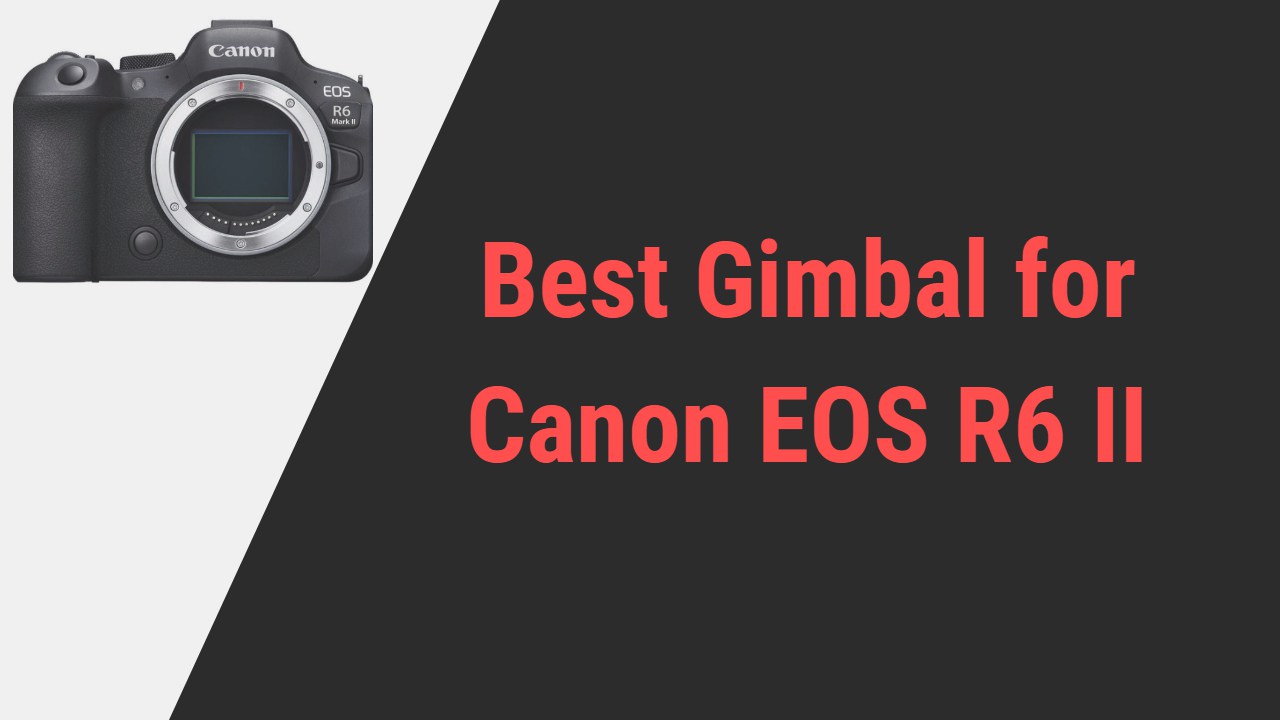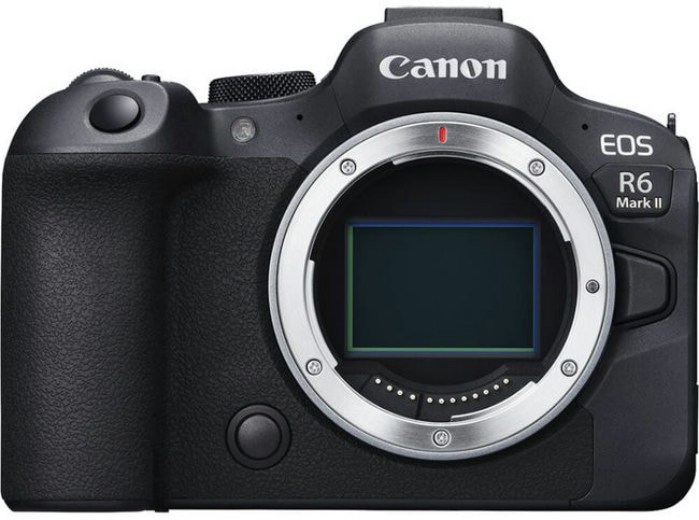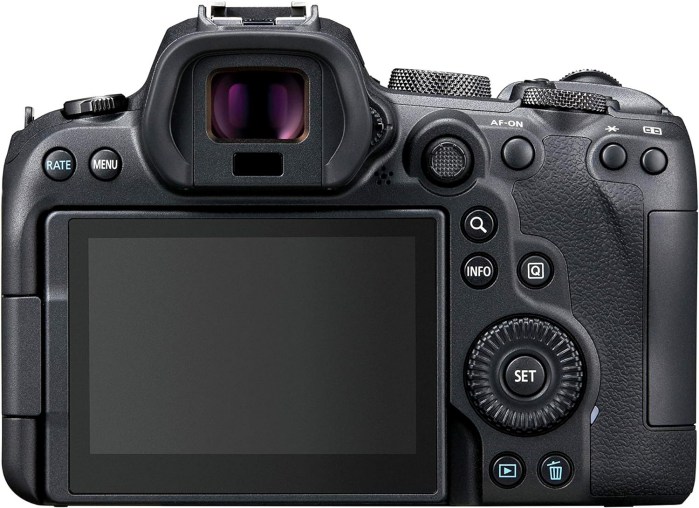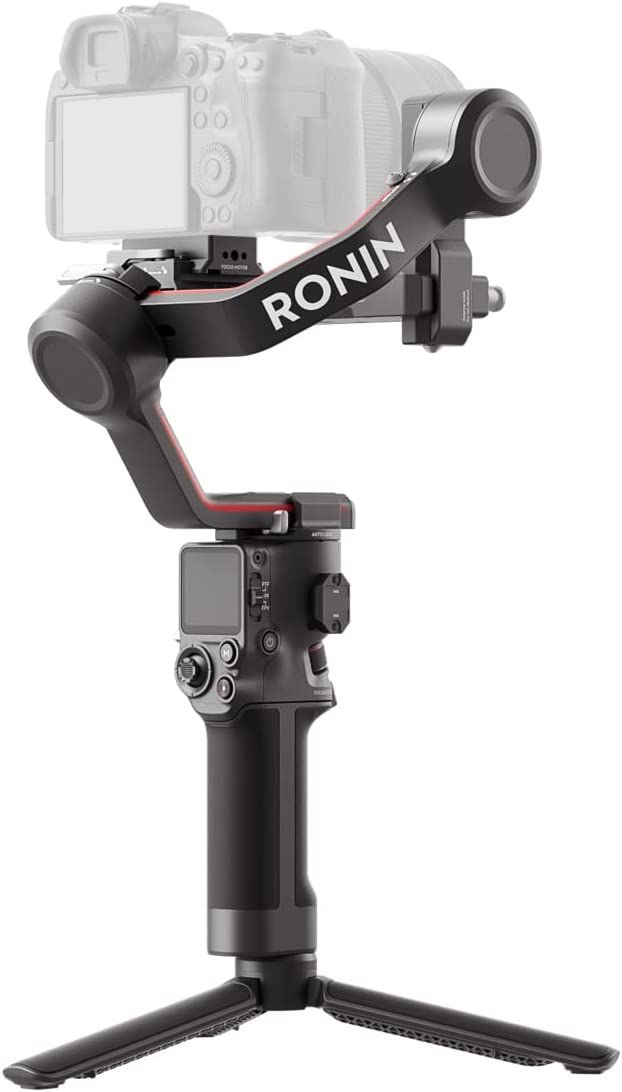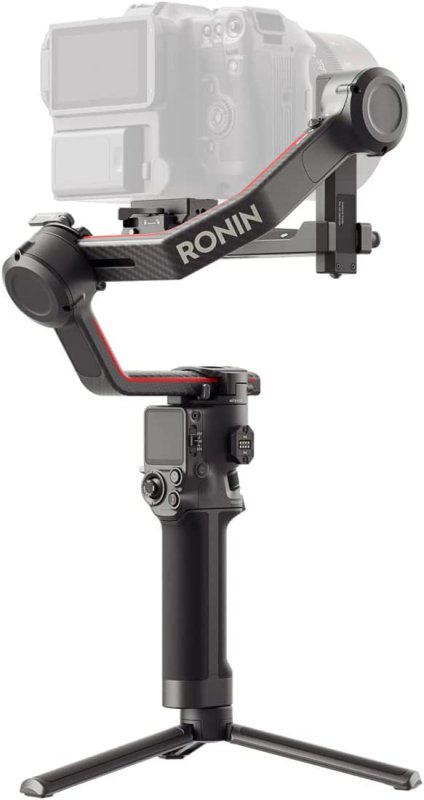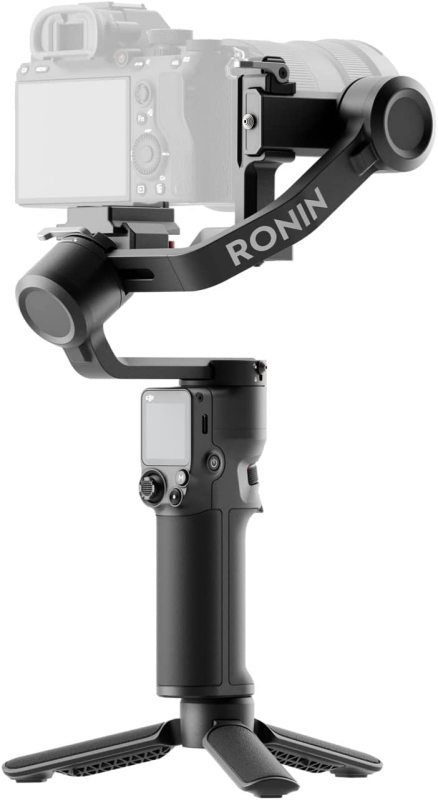I have been in the photography world for quite a long time now, and I know how much each click matters; every click has the potential to freeze a lifetime of memories. I stand my ground in creative filmmaking with the greatest of all time, the Canon EOS R6 II camera.
The camera’s advanced features, superior image quality, and top-notch versatility make it a go-to choice for any and every professional who wants nothing but the best. But wait, there’s more to it; something missing.
Canon EOS R6 II
All the below-mentioned gimbals are compatible with the Canon EOS R6 II Camera.
| DJI RS 3 (Best Overall)

|
| DJI RS 3 Pro (Most High-end - Highest Payload Capacity & Comes with Advanced Features)
    |
| DJI RS 3 Mini (Budget Pick)
    |
Enter the world of gimbals, a true piece of perfection where precision meets artistry to cook up a cinematically stabilized masterpiece.
So I am here offering you to embark on a journey with me to find the right fit of the best gimbal for Canon EOS R6 II; get ready to explore and embrace the finest features, creative performance, and templates that will help you land in the world of clear, smooth and stabilize filming in no time.
Scroll down and find the best gimbal for your Canon EOS R6 II.
Best Gimbal for Canon EOS R6 II
1. DJI RS 3 3-Axis Gimbal for Mirrorless Cameras
Highlight– When I first laid my hands on the DJI RS 3, a masterpiece of one of the most reputed brands, DJI, it felt like a kid in a candy store getting his favorite flavor. Without even pre-experience with RS 3, I was more than eager to unravel the world of smooth cinematic shooting.
Wandering in the market for one best gimbal for Canon EOS R6 II has exhausted me enough; I was curious to see if the RS 3 lived up to the hype, and boy! It absolutely did!
Compatibility with Canon EOS R6 II
No questions asked, DJI RS 3 is definitely the seamless companion for the Canon EOS R6 II; it most definitely offers wonderfully smooth compatibility that not only enhances your footage but your filmmaking experience. A few things define the marvelous compatibility of the gimbal
- RS 3 supports a potent payload of 6.6 pounds, enough to carry 1.3 pounds of EOS R6 II
- The gimbal supports quick-release plates that make intuitive balancing a breeze
- The control and settings configuration of both makes it a powerful duo, enabling to achieve better footage
Special Features-
Apart from the seamless integration, there are a lot more things about DJI RS 3 that made it quite special: Ravishing features that made the gimbal a best-seller worldwide.
First thing first, the gimbal mastered the art of stabilization; with the company of an upgraded DJI RS 3 Stabilization algorithm, it works hard to deliver top-notch stability over every dynamic shot.
In addition, there is another super smooth mode available, which works to increase the motor torque in order to deliver stable footage. This way, it follows the 20% enhanced stabilization theory from its predecessor.
Then comes the creativity, so apart from the stability, the gimbal makes sure you get your dose of creativity within every shot. It allows shooting multiple follow modes and intelligent function modes such as timelapse, time tunnel, and panorama, all to add extra art to every shot.
Also, the gimbal supports live transmission of footage, which means with the help of Ronin Raven Eye, an image transmitter, you get to see live feeds directly to your mobile device.
If we talk about the control, handling RS 3 is way too easy. Two things: the gimbals can be adjusted using physical dials engraved on their bodies or via the Ronin application, which gives the creative freedom and flexibility you ever anticipated.
There’s a wide OLED full-colored panel that comes with RS 3 Body sized 1.8 inches, giving about 80% larger display than the previous edition in order to engage with precise and intuitive control.
The build of the gimbal is decent enough to carry the task, and it supports an automated axis lock to keep the balance secured while detaching or attaching the camera.
The gimbal itself weighs a little about 2.8 pounds. The exceptional power, with the support of a lithium-ion polymer battery, can grant about 12 hours of filming on a single charge, which can be recharged within 2.5 hours only.
Pros
- Powerful functions
- Upgraded stabilization
- Seamless control
- Super Smooth Result
- Reliable creativity
- Live transmitting
- Auto Axis lock
Cons
- Lack Durability
- Fluctuate with excess accessories
2. DJI RS 3 Pro Handheld 3-Axis Gimbal for Canon EOS R6 II
Highlight– Moving on to another magnificent piece of creation from the DJI Treasury itself; The upgraded and more potent version of DJI RS 3, an almighty DJI RS 3 Pro with its powerful innovation and intention to slay.
Now, I have always believed the right gear can either make or break the filmmaking project. I was eager to check what category the RS 3 Pro lies in, and trust me when I say this RS 3 Pro goes above and beyond to provide stabilization for my EOS R6 II.
Compatibility with Canon EOS R6 II
If I might say, RS 3 Pro feels tailored to perfection for the Canon EOS R6 II, I felt it in one scoop. Upon pairing, this gimbal and camera work in perfect synergy, making sure you capture stunning, shake-free footage. The factors that show their exquisite compatibility are-
- The Beast RS 3 Pro holds the potential to carry any camera up to 10 pounds weight, easily satisfying the R6 II’s least weight.
- Mounting up this 3-axis gimbal with EOS R6 II is simplest with its quick-release plates and high-graded auto-tune feature.
- The companionship of RS 3 PRO and EOS R6 II offers a harmonious blend of advanced-level stabilization and straightforward integration.
Special Features-
Well, let me start with its first impression; the moment I unboxed this beauty, I was amused by its sleek, stunning, and sophisticated design. And when I held it in my hand, it reflected a premium feel that shows that DJI put a lot more effort into making this piece.
The carbon fiber construction also has to do a good deed in the same regard; it made the gimbal lighter as well as stronger to tackle any situation with a least 3-pound weight.
If we talk about performance, let’s say it holds an upgraded rate of third-generation DJI stabilization algorithm that RS 3 has only in the improved version. The same supersmooth mode follows this updated version to keep footage extra steady.
RS 3 Pro mastered creative templates shooting the same way RS 3 did, timelapse, hyper lapse, panorama, and multiple follow mode; everything is super artistic.
Then what’s new? Let me tell you, the high-grade stability RS 3 Pro exudes an extensive scenario, thanks to the amazing DJI RS SDK protocol.
Then there’s the high bright remote monitor support RS 3 Pro has, which can be used with Ronin 4D hand grips, DJI Master wheels, and others to enhance the filmmaking experience as well as efficiency.
There are additional mouthful features, such as advanced LiDAR compatibility, which makes focusing easy and interesting.
With the support of Ronin 4D’s LiDAR focusing technology, the LiDAR range finder can project about 43200 ranging points to get proper focus. Then, there is an upgraded active track Pro that wouldn’t let the subject disappear from the frame.
During the building of the DJI RS 3 Pro, the brand played another master card and included some extensive ports and accessories: dual RSA/NATO ports to go with any grip handle and others.
The power seems to get better with the involvement of a lithium-ion polymer battery charged to 1950 mAh; you get to shoot about 12 hours of constant on a single charge with the promise of 1.5 hours of recharging time only.
Pros
- Extensive coverage
- LiDAR compatibility
- Quickest recharging
- Additional ports
- Active Track Pro
- Carbon Fiber build
- Greatest Payload
- Efficient controls
Cons
- Bulkier and pricy
- Challenging to use
3. DJI RS 3 Mini 3-Axis Gimbal Stabilizer for Canon
Highlight– Presenting one finest and affordable gimbal for Canon EOS R6 II, the very recent launch from DJI with the ultimate power of RS 3 Pro and comfortability of RS 3 together into this exclusively user-friendly DJI RS 3 Mini gimbal.
So, this DJI RS 3 mini here is a total game-changer curated for Canon EOS R6 II that reflects portability, convenience, and professional grade stabilization within a reasonable price range.
Compatibility with Canon EOS R6 II
Don’t underestimate this compact and portable RS 3 Mini as a suitable company for EOS R6 II. Despite its small size, this combination allows any filmmaker to capture cinematic moments with utter ease without compromising the performance.
- Weighing least, the RS 3 Mini can carry up to 4.4 pounds of payload, which is decent for EOS R6 II and some basic accessories.
- Connecting the RS 3 Mini with the EOS R6 II is easy enough for beginners with its dual-layered quick release and no rebalancing need factor.
- This user-friendly RS 3 Mini with EOS R6 II grants exceptional stability and whisper-quiet operation value comfort of the photographer.
Special Features-
First thing first, don’t let the RS 3 Mini size fool you – it delivers exceptional stability. With the indulging of the 3rd generation RS stabilization algorithm, it handles sudden movements and complex shots with grace, providing footage that looks as if it was captured by a seasoned pro.
In addition, it also has a tripod that can be detached when not needed; this tripod gives the feel of an extended grip to make sure you don’t leave any room for unprofessionalism.
Then, the creativity, no matter what cost is associated, RS 3 Mini reflects wonderful artistry when it comes to shooting. There are creative effects you can engage in, such as panorama, timelapse, and tracking, that make every scene look stunning.
The RS 3 mini is super effective for vloggers or content creators as it has the ability to easily switch from horizontal mode to vertical mode without any additional accessories needed.
This comes in handy in filming vlogs or content for social media. There is another integrated NATO mount available that will let you attach additional accessories like an RS Briefcase handle to give more comfort during filming.
Other than that, there is always hands-on support of dual layered quick-release plates that make the camera mount easy and smooth.
Control is super fun with the RS 3 Mini because it comes with multiple control options tailored to provide user comfort.
You can manage the gimbal movement, focus, and other settings easily via the gimbal’s physically engraved buttons, but if you do not want to interact with the gimbal while operating, you can opt for wireless control through the official Ronin application.
I was a little stunned about how this compact gimbal holds so much power and functions the same way it does in the upgraded version.
The least weight of 1.8 pounds and compact design that can fit even In pocket still held durability factors for hassle-free filming, and there is 1.4 inches wide OLED for display as well.
Battery life can be a concern for lengthy shoots, but the RS3 Mini’s extended battery life surprised me. The 2450 mAh battery with 10 hours filming at single charge with 2.5 hours recharging is more than amazing if I say
Pros
- Better controls and vision
- Pocket-sized powerhouse
- Multiple controls
- Lightest and compact
- Decent power backup
- Detachable tripod
- Reasonably cheap
Cons
- Limited payload
- Not as advanced as expected
Buying Guide for the best gimbal for Canon EOS R6 II
Capturing life’s precious moments has never been so amusing as with the Canon EOS R6 II. I have managed to take out some exceptionally beautiful and fascinating moments with EOS R6 II, but adding the right choice of gimbal with it has made things even more thrilling.
I might add that one can truly know their creativity limits and unleash the potential of this remarkable camera by pairing it with the best gimbal. A tool that promises steady and cinema-quality shots.
So, to get that perfect tool for your top-notch photography, here is the comprehensive buying guide you will need. Consider these factors and understand their intricacies in order to get the ideal fit.
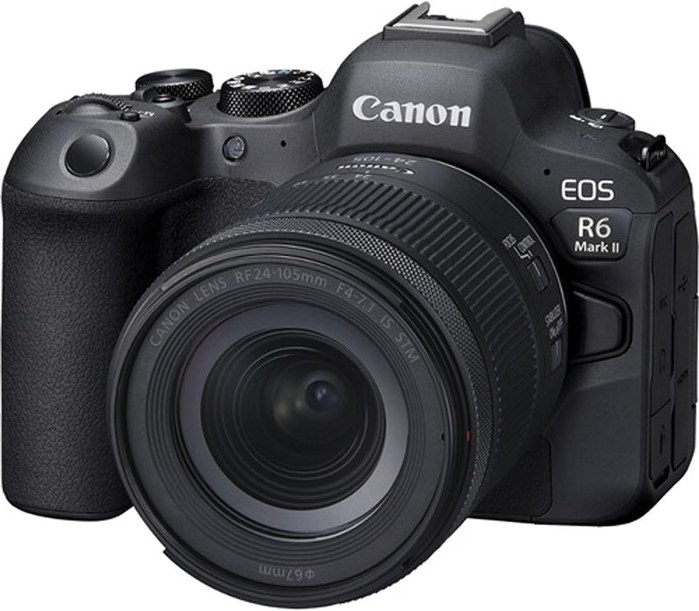

Compatibility– One thing primarily keep in mind, not all the gimbals are compatible with all the cameras, so make sure the gimbal you are choosing supports your Canon EOS R6 II and check its mounting options
Payload– Make sure the gimbal you are considering can carry the weight of EOS R6 II, including all the additional accessories like lenses and stuff. So, always go for a gimbal with a higher payload capacity range.
Stabilization– Take a deep breath and analyze the stabilization excellence it holds and whether or not it’s up to your standard. Always go for a gimbal with three-axis stabilization for the best stability and smooth footage.
Versatility– Apart from the stabilization, you need to make sure the gimbal you have your eye on is versatile enough to carry over the task of creating artistic wonder. This is where you choose a variation of shooting modes, innovative features, and other functions that satisfy your creative endeavors.
Portability– Gimbal is synonymous with maneuverability, meaning you have to pick the one with the greatest portability of all time. You can check out the gimbal weight body design and ergonomics so that you can hold it for a longer period.
Battery– Remember, for an uninterrupted long operation, it’s necessary to have a powerful battery. So, choose a gimbal with the strongest battery support and longest runtime; quick charging and reverse charging are a plus.
Controls– Gimbal are designed as the simplest tool for either professionals or beginners, so check whether or not it has straightforward controls and easy application integration. Stay away from complicated interfaces.
Value– After all these serious considerations, do not just pick any random gimbal; you have made sure you are choosing the gimbal of the right value, and for that, you need to check its price and compare if it’s worth the feature and your standard needs. Then, go and determine the brands and opt for reputed and reliable brands only.
Frequently Asked Questions (FAQs)
Q. How much to spend on a Canon EOS R6 II gimbal?
The amount you should spend on a gimbal for your Canon EOS R6 II can vary based on your specific needs and preferences. If you are looking for a general gimbal to practice filmmaking with EOS R6 II, you can follow up around $100 to $200. However, if you’re looking for higher-end models with advanced features and greater stability, you might need to invest between $300 to $600 or more. So, it is important to keep your budget in mind and choose the gimbal that meets your standard budget and needs.
Q. What are the different modes to try with a gimbal?
Well, let me break the most common stereotype of using a gimbal: it doesn’t only stabilize; there are exceptionally wide oceans of artistry you can do with your gimbal. There are countless gimbal modes you can try to add creativity and professionalism to your videos. For instance, Pan follows mode allows a gimbal for left and right movement, lock mode for locking all the axes while shooting, Inception mode for mesmerizing spinning or 360-degree shots, or Time-lapse mode for catching slow-motion time-lapse footage.
Q. Which brand is best for the Canon EOS R6 II gimbal?
Since the Canon EOS R6 II is a perfect example of advancement and technology, I would say always go for the high-quality gimbals made by a number of reputed companies. In the same regard, your chances with DJI, Zhiyun, FeiyuTech, or Moza are good. Each of these brands offers various models with different features and price points, but it’s always best to research specific gimbal models, read reviews, and compare them to find the one that best meets your needs, shooting style, and budget for your Canon EOS R6 II.
Final Words
So, as the curtains fall on the whole journey through the world of the best gimbal for Canon EOS R6 II, I want to ask one thing straight: which of these has lived up to your expectations? In the pursuit of perfection, which of these beauties had adored you on the best level?
Will it be the popularity and decent potential rate of DJI RS 3 that will go home with you? The high-end versatility and cutting-edge professional features of DJI RS 3 Pro fascinated you enough.
Or are you short on budget or starting with the basic and affordable DJI RS 3 mini? Don’t forget to let me know in the comment section below.
Also, it’s not the end; if you want to explore more options, you can try the realm of advanced versatile curated for Canon EOS R6 II on the basis of the buying guides I presented.
Because in the end, you know, with the ideal gimbal in your kit, you can literally paint the photography world with utter stability and breathtaking precision, conquering the art of stabilized filming.
So go on, be the conqueror, and happy filming.

